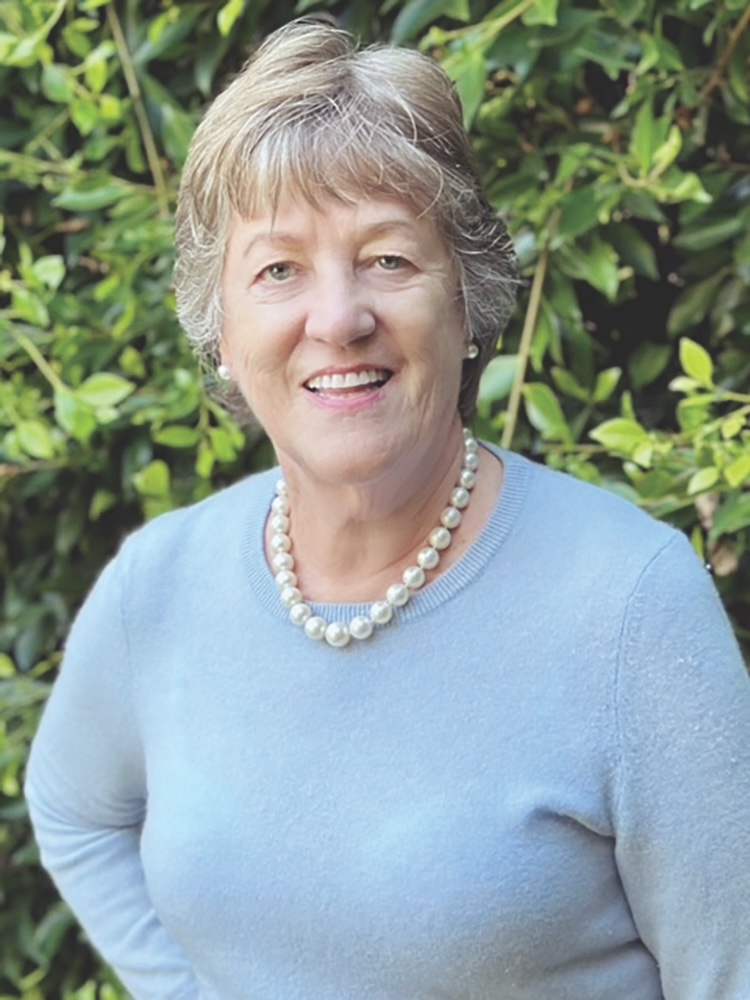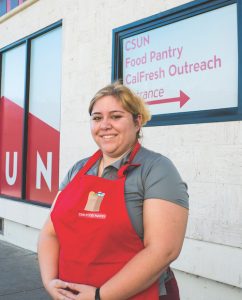Empowering Women Through Collective Giving: The Los Angeles Women’s Giving Circle


Bonnie Davidoff and Janet Soffer are the co-founders of the Los Angeles Women’s Giving Circle, a philanthropic organization dedicated to supporting programs that benefit the development and well-being of young women in the Los Angeles area.
Bonnie Davidoff, with a background in print advertising sales, found herself seeking a meaningful way to contribute to her community as her children entered college. Her involvement in youth sports and desire to help those less advantaged laid the groundwork for her philanthropic journey.
Janet Soffer, having worked at the Museum of Tolerance for eight years, sought an uplifting project after caring for her father who was suffering with dementia. Her experience in education and passion for community engagement made her an ideal partner in this venture. They both sought a way to be instrumental in giving back to their community while also building a social community among a new group of like-minded friends. Inspired by an article in the now defunct women’s magazine MORE about giving circles, together they decided to establish their own local giving circle and nearly two decades ago, the Los Angeles Women’s Giving Circle was born.
Giving circles have become more prominent throughout not just California but across the nation and even globally (in West Africa they’re called “Susu”). An Alliance magazine article about the history of giving circles traces the modern version of these circles back to the 1990s with about 50 recorded in 1995. Giving circles began to be popularized among women when working women rose through the ranks in record numbers amassing their own wealth and wanting to distribute it on their own terms. This philanthropic model tends to be place-based, highly-flexible, and democratic.
Today, there are roughly 4,000 giving circles in the U.S. with 370,000 members who, in the last seven years, have collectively given away $3.1 billion (as of 2023).
The Los Angeles Women’s Giving Circle has grown since its founding to include a diverse group of women from various backgrounds all committed to making a difference in their “backyard.” They focus on researching and funding programs that support young women and girls, filling a crucial gap in philanthropic giving. Through their efforts, they’ve not only made a significant impact on numerous local organizations but they have also fostered a strong sense of community and friendship among their members.
Q: What about your backgrounds led you to form the Giving Circle?
Bonnie: I remember my daughters were in college or about to go, and I knew I was going to be an empty nester. I wanted to do something meaningful, to contribute. I was on a hike with my friend Lenore Sokel, who handed me an article from MORE magazine about women’s giving circles. The article described a basic model where women would get together for dinner, and instead of going out, they’d take the money they saved and put it into a pot for charity. I loved the idea, and Lenore suggested we start one ourselves.
Janet: I had known Lenore for a long time, and we had worked together at the Museum of Tolerance. After eight years there, which was wonderful but also depressing due to the nature of the work, I needed something uplifting in my life. When Lenore approached us about this, I thought it was great. It was just what I wanted to do – get involved in something beneficial to others and a way to give back to my community and have some fun.
Q: Why a giving circle? How does that fit with your philanthropic passions?
Bonnie: A giving circle made sense because it combines the philanthropic side with a social aspect. We wanted to make a difference but also connect with like-minded people. It’s different from other groups that give larger sums of money but don’t have the same connection among members. The camaraderie in a group with a mission to help others is really important to me.
Janet: Besides the social component, it was also a way to really connect with organizations in the community, to be involved and learn about what’s going on. It’s eye-opening to discover the amazing things happening in our city. I also didn’t want a homogeneous group of women. I wanted a variety of people coming from different walks of life, and that’s what our group represents.
Q: Your Los Angeles Women’s Giving Circle is dedicated to researching and funding programs that benefit the development and well-being of young women in the Los Angeles area. Why did you focus on directing your giving to young women?
Janet: We wanted to have a narrow focus, otherwise we’d be all over the map. Having sons, I didn’t really have access to what was going on for young girls, but I was a young girl once, and it just felt right. It also seemed right to the people we networked with. We’ve revisited our mission statement many times over the years because things don’t stay static. We’ve had to address questions like: What if an organization we support helps young women with boy children? What about people who identify as women? What about organizations that predominantly help women but also include some young men? We’ve had to massage that mission statement many times through discussions with our membership.
Bonnie: It was a collective thought process. It was important not to have a “diffuse” or vague mission and goal. We knew we had to narrow it down, otherwise we’d be looking at every organization which wouldn’t have been prudent as we started out. [There are currently over 53,000 nonprofit organizations in Los Angeles.]
Q: You allow organizations to ask for grants two years in a row, then take a year off before they can apply again. How has that benefited the organizations, and has it had any negative effects on newer organizations seeking money?
Janet: When we first started, there were a couple of amazing organizations, but it became evident over a couple of grant cycles that we were almost like benefactors rather than a foundation open to new organizations. This rule was a vehicle to allow for a new crop of applicants. It also allows for more variety in the types of organizations we support. You’d like, as a giving circle, to help every organization that comes through your door. By having a rule that institutes a rotation, we feel we’re able to make a larger impact across more organizations.
Bonnie: In fact, being a new organization might be an advantage. With our giving circle, organizations can either choose to submit a written request or come in and meet our members in person and give us their request during one of our meetings. It’s another way we get to know what’s happening in our community, through the organizations that come speak to us. Between heart-wrenching missions and organizational leaders who are articulate and passionate about what they’re doing, it’s hard to say no to them.
Q: Based on your experiences, what do you think the biggest social issues facing Los Angeles are, and how can grassroots philanthropy best address those issues?
Janet: I think homelessness is a major issue.
Bonnie: I agree. Homeless women, in particular, are really underserved and suffer terribly on the streets. While our small organization might not make a big dent in the overall problem, the grants we do give to the organizations we work with are making an impact. That is the power of collective giving.
Janet: The topic of whether to give to an organization dealing with a crisis or one focused on intervention to prevent crises comes up every year. We have organizations that do both. Some try to break the cycle of homelessness, teen pregnancy, or educational gaps, while others deal with daily crises. It’s hard to know which is more effective or where our money will make a bigger difference. It’s impossible to know, so we do the best we can with the money we have.
Q: What’s the secret sauce to having a successful, long-lasting giving circle that doesn’t lose the interest of its patrons or fade out over time?
Janet: First, most of our members have come to us through word of mouth, which helps our organization stay together. Secondly, we put a big emphasis on consensus. We’re not like other organizations where a board does all the work and everyone else just pays their money. We really talk about things as a group and listen to ideas from all members.
Bonnie: Our giving circle is interactive throughout the process of giving our grants. We research the nonprofits, invite them to make in-person presentations, do on-site visits, and discuss how we can best divide up the grants based on who has asked for what money. And all of that is done with accompanying group discussion. All of our members have a voice. Which also means the social aspect is important. We usually have a half-hour get together plus dinner at our meetings. Being connected to people we’re being philanthropic with helps us understand different viewpoints that are voiced. It broadens our community and creates a different level of camaraderie and interest in each other. And, in the end, it broadens how our giving circle acts philanthropically.
Q: How do you determine success for your giving circle?
Bonnie: One measure of success is our growth. We started with 10 people and have had a fair amount of growth and diversity in our membership. Also, we get a lot of positive feedback from the organizations we donate to. They appreciate our process, how we ask them to present, and that we follow up with visits.
Janet: We’ve also raised the profile of several grassroots organizations in the community. For example, there was an organization called RowLA that started with one person teaching girls from Culver City High School to row. We gave them a boat and equipment, and eventually, they grew to attract big donors like Annenberg. We consider that a success.
Q: Do you think it’s important to be aware of major social issues facing California, or should you let the organizations that come to you bring awareness?
Janet: I think it’s both. While our members, many of whom are lawyers, are very informed, it’s hard to stay abreast of every potential need in California. We all know the larger social issues facing the state but every year we get surprised by an organization that will come in and their mission will fill a glaring need that we simply hadn’t been aware of before. And when it comes down to it, every need for every part of the population is pressing.
Bonnie: Every year our members research to find new organizations. That entails reading, listening, and talking about the leading issues facing California but also issues that may be more near and dear to that member. They present the organizations they’ve discovered to our group. So, in the end, we’re being educated by ourselves, our members, the organizations presenting to us and, of course, our community’s needs.
Q: What does the future hold for giving circles in your opinion? Will they remain a way for new philanthropists to get involved? Will they become so popular that they price out the middle class working voice?
Janet: I think the reputation of giving circles has been raised and broadened. Ten years ago, people didn’t know what I was talking about when I mentioned giving circles. Now everybody knows what they are. I think that bodes well for giving circles in the future. The more people understand what they do and take it on themselves, the better.
Bonnie: And the more money that is being given out to nonprofit organizations.
[Editor’s Note: Philanthropy Together now has a searchable database, by zip code, of more than 4,000 giving circles, which can be accessed at https://philanthropytogether.org/directory]
Q: What advice would you give to anyone who wanted to start a new giving circle in California?
Janet: There are, of course, the infrastructure aspects that need to be considered. Bonnie, our friend Lenore, and I did a lot of that work the first year before we even started networking to bring people in. Anyone considering starting a giving circle needs to remember that for it to work, for it to be successful and philanthropic and sustainable, it needs to be viewed by its members as being reliable.
We wrote the mission statement, incorporated, wrote bylaws, set up a website, and got nonprofit status from the IRS. We did all the infrastructure before we even began. I think that’s really important because if you’re dealing with other people’s money, you want them to know you’re serious and intent on doing the right thing.
Bonnie: Those formal things are really important. I would also advise finding out what touches your heart so that you can gather other like-minded people. Decide on the components that make the giving circle work for you so that you have the best chance at doing what a giving circle is designed to do: to pool your money to make the most impact.
Q: Is there anything else you’d like to add about giving circles or your giving circle in particular?
Janet: At the end of the year, we have our award ceremony where we give the grants to the organizations. We invite representatives from each organization. There’s a wonderful synergy that happens. They may not know about one another in the community, and when we bring them together, they start talking. They find out how they can work together or how one project will benefit the other participants. That synergy between these organizations is really the cherry on top.
Bonnie: It’s so wonderful to see.
